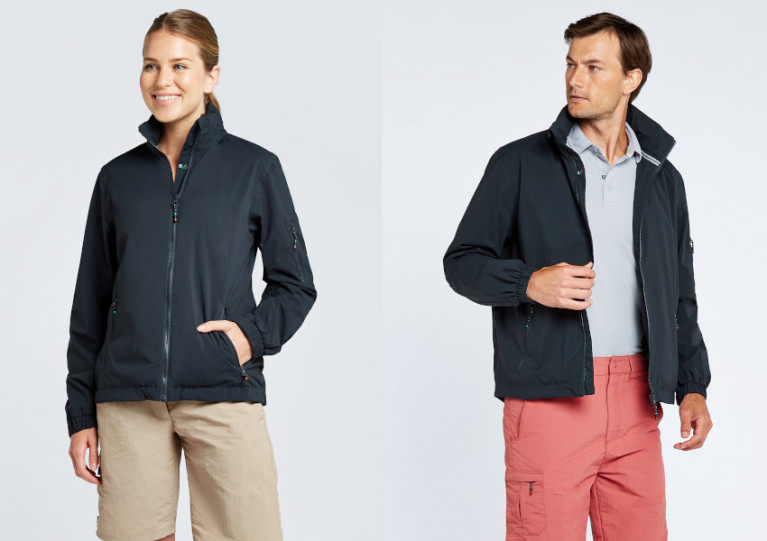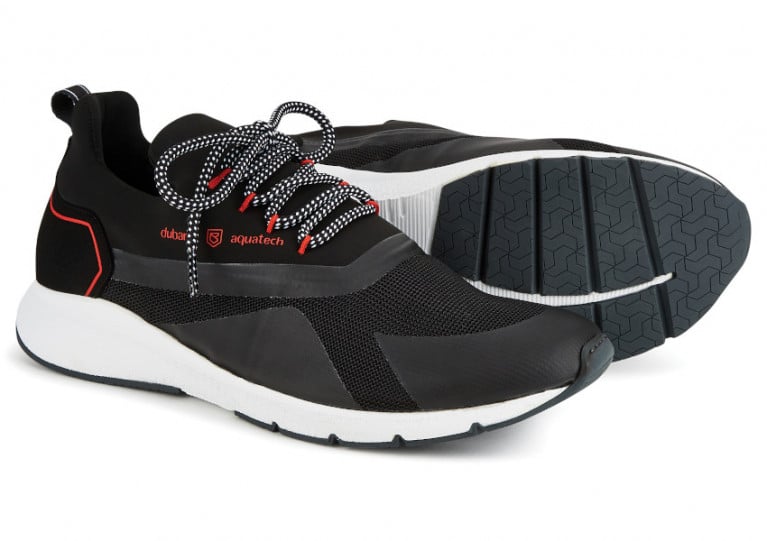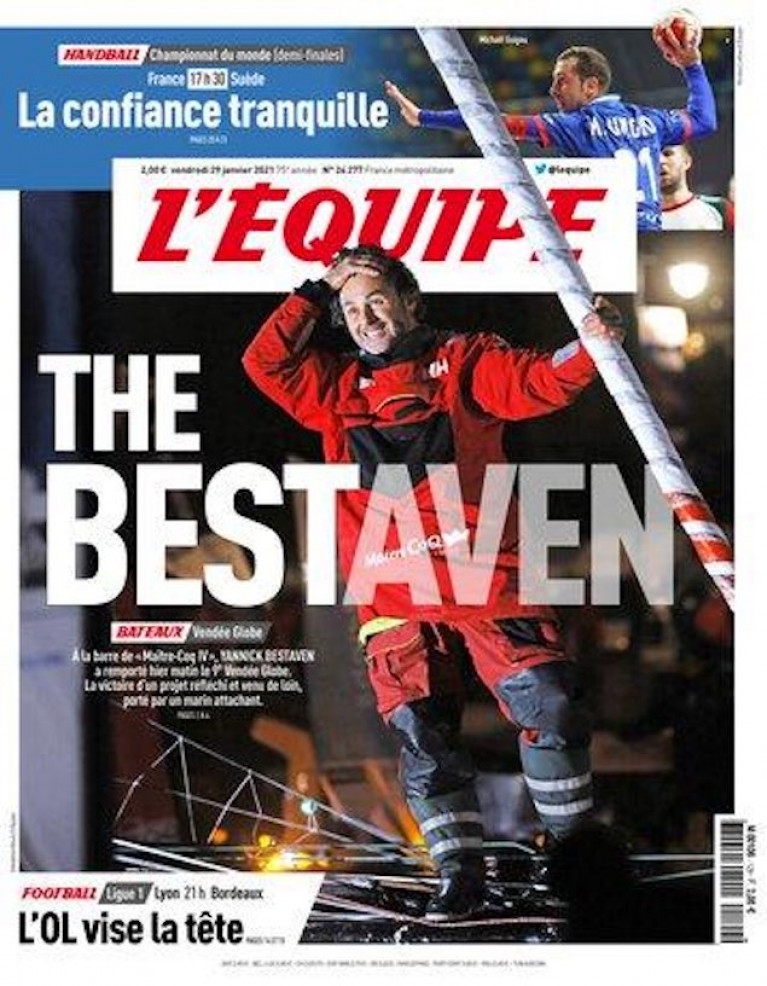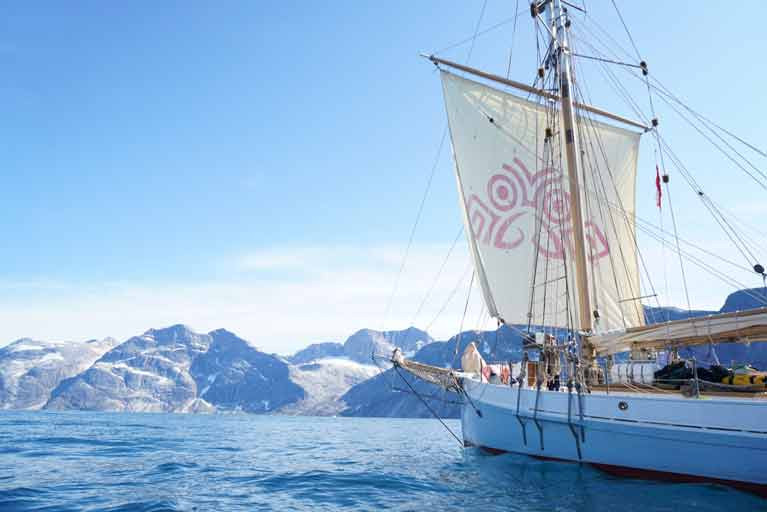Displaying items by tag: Dubarry
Irish outdoor clothing and footwear brand Dubarry has announced the launch of its new Palermo range of trainers, designed to offer both on and off-the-water performance.
Dubarry says the Palermo combines the classic sneaker style with modern materials to provide exceptional ventilation and comfort, making it the perfect choice for long days on deck or exploring ashore.
Featuring a super-lightweight sole and an upper mesh structure for excellent ventilation, the Palermo style takes a classic sneaker shape, making it a useful off-shore option as well. Additionally, a toe guard increases its durability and provides protection when moving quickly on deck. The removable footbed also allows for easy washing to keep trainers performing for longer.
 The new Palermo range is available in a range of colours and sizes and is sure to be a hit with outdoor enthusiasts, hikers, and sailors alike
The new Palermo range is available in a range of colours and sizes and is sure to be a hit with outdoor enthusiasts, hikers, and sailors alike
The sporty bi-compound sole unit and lightweight premium EVA compound midsole ensure maximum comfort and support, while the non-slip and non-marking outsole comes with a unique water dispersal channel system to prevent aquaplaning. The Palermo also features a traditional lace-up facing for a secure and custom foot fit, a synthetic mesh and lycra upper with an anti-odour, anti-microbial finish that is quick-drying and breathable, and a KPU toe guard that offers high wear resistance and protection in this area.
As Sunday’s start of the Transat en Double race to Saint Barthélemy was postponed because of severe weather forecasted for the Bay of Biscay, Tom Dolan and Dubarry are pleased to make use of the delay to announce an extension of their partnership.
Ireland’s leading solo offshore sailor, Tom Dolan, has extended his long-standing partnership with marine footwear and clothing brand Dubarry for a further three years.
The skipper of Smurfit Kappa has just taken a timely delivery of a full collection of pieces from their New Aquatech range as he prepares to take on the Atlantic for the imminent "Transat en Double", Concarneau- Saint Barthélemy race.
 Transat en Double competitors Gildas Mahé (left) and Tom Dolan Photo: Alexis Courcoux
Transat en Double competitors Gildas Mahé (left) and Tom Dolan Photo: Alexis Courcoux
“Dubarry were the first on board back in 2016 when they really showed some early interest and faith in me. Michael Walsh sent me over a pair of boots for my first serious mini-campaign and after five full racing seasons, including three Atlantic crossings, I still use them today! Since then we've had a great relationship and stay in close touch, they have always taken an interest in what I am doing and clearly, they feel I do a reasonable job for them. I am really delighted they have chosen to extend our partnership.” smiled Dolan, “They are an Irish company achieving global success in their markets and I am proud to fly their colours.”
Tom will be fully kitted out with pieces from the new Dubarry Aquatech clothing range, with footwear as well as some financial support. “We are proud to support Tom and to share in his story seeing him progress from leaving his native rural County Meath to pursue his dream in France” commented Michael Walsh Marketing Director of Dubarry. “We like Toms professional yet friendly approach both on and off the water and value the feedback he can provide us on the performance of our footwear and clothing, which our Design team can then incorporate into the product development process” added Walsh.
Dubarry Women’s Open Keelboat Championship 2021 Teams up with RYA/British Keelboat League
The Women's Open Keelboat Championship (WOKC) will be returning to Hamble for its 12th edition in June 2021.
After sadly having to cancel the 2020 edition of the event organiser say they can’t wait to see lots of boats on the start line of WOKC 2021.
The 2021 event will take place on the 5th-6th of June out of the Royal Southern Yacht Club.
Alongside its IRC classes, WOKC has teamed up with the RYA to join the event with the British Keelboat League. This will give more opportunities to women who would like to compete at the event.
For the first time, teams will be able to enter the event and race in a competitive fleet without having to find a boat to use. Teams of 4 women can enter and compete in the event without having to find a boat to use/charter opening up the event to sailors who don’t have access to a keelboat. Further to that, the winners of the RS21/BKL fleet will qualify for the British Keelboat League Final.
 RS21 racing
RS21 racing
In addition to this, WOKC has also increased the upper limit of the IRC rating band to 1.150. This is to include all Performance 40’s and the new, exciting Cape 31 class should these boats wish to enter.
WOKC were able to do this as there will now be two separate race courses, one for the RS21’s and the other for the IRC fleet.
“We’re very excited to be joining forces with the British Keelboat League, it’s such a great way to get more sailors out on the water. It means we can open the event to more women from all over the country, allowing those who do not have access to yachts to enter the event. We are extremely grateful to Dubarry for their continued support and Royal Southern Yacht Club who are helping us to grow the event.” said Tor Tomlinson, Event Organiser.

“It is great that we are able to bring a British Keelboat League Qualifier to the Women’s Open Keelboat Championship this year. The WOKC is a great opportunity for talented sailors to get together and compete against their peers but it can be hard for those not already in the loop to get involved. By adding the BKL to the event we hope to see many more sailors get involved and hopefully, they can make connections to do more yacht and keelboat racing in the future. I am really looking forward to this year's racing, said Jack Fenwick, RYA Keelboat Development Manager.
Entries open for IRC at the beginning of April and with early bird entry of £80, available until 7th May. After that date, the entry fee will increase to £100. Entries will be open on the Royal Southern website here
Entries for BKL/RS21 racing is £330 per team. This includes entry, coaching and boat charter here
The Women’s Open Keelboat Championship was founded in 2008 by a group of passionate female sailors who wanted to compete in challenging racing against other women. Over the years the team behind the regatta has evolved but the vision has remained the same.
The organisers are all volunteers and donations of support, time and charity raffle prizes are all gratefully received. The event is non-profit making with all proceeds going to a nominated charity.
Along with its new performance trainers, Dubarry’s Aquatech collection also includes marine clothing for all conditions you’ll experience on the water.
The clothing collection contains many protective features ranging from UPF sun protection, wind and water resistance to highly breathable performance.
There are many practical attributes such as anti-odour, moisture wicking, quick dry and even a hidden removable eyewear cleaning cloth on most styles.
And selected styles are designed to allow for personalisation, with space for embroidery or printing of boat, team or crew names.
Levanto and Corfu are the new lightweight crew jacket designs in the Aquatech range.
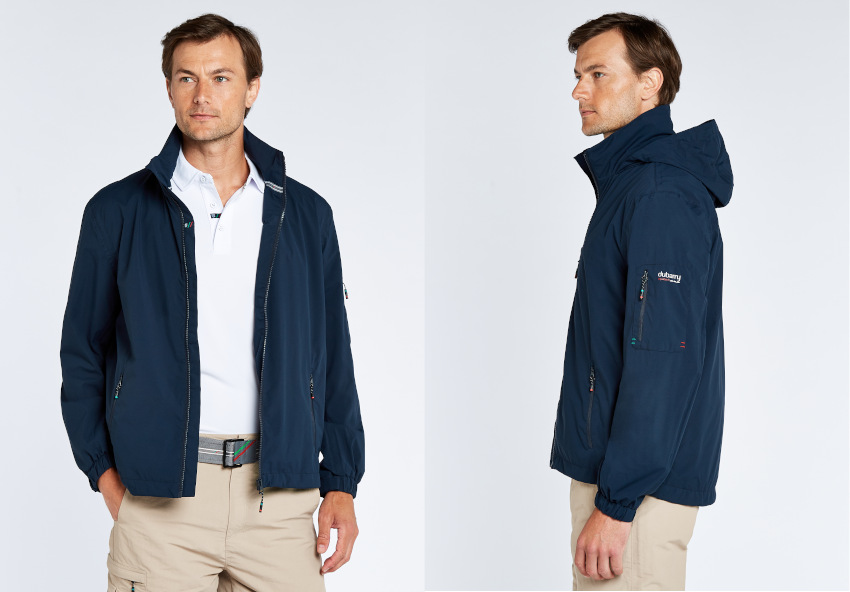
The Levanto men’s crew jacket is a stylish and versatile, durable and practical, and offers exceptional levels of waterproofing and breathability for this style of jacket while preserving your freedom of movement and keeping you snug inside.
Key features include taped seams and adjustable cuffs to keep water out and warmth in while allowing an adjustable fit. The lightweight polyester mesh lining adds extra insulation and super-soft nylon inner sleeves make it effortless to slip on and off.
The zipped, stand-up collar is equipped with a chin guard and a cleverly concealed, rollaway hood keeps the worst of the weather at bay. There’s also a built-in cleaning cloth on a bungee cord to keep your eyewear crystal clear.
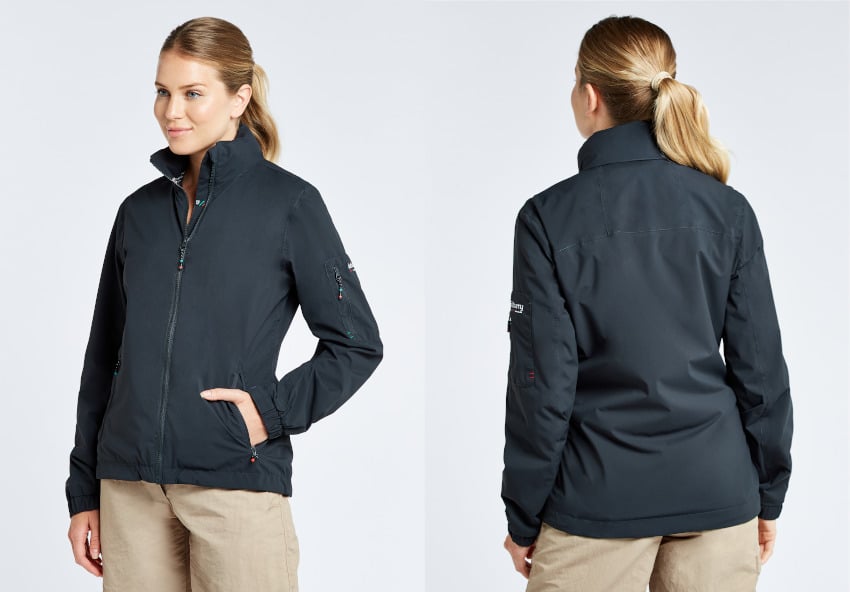
The Corfu women’s crew jacket is a reliably waterproof and impressively breathable. This snug new style of lightweight jacket is designed and built to provide excellent insulation from chilly headwinds without being heavy or bulky.
It’s loaded with technical features like fully taped seams, padded chin guard and adjustable cuffs, impermeable outer shell and super-soft inner lining. The zipped, stand-up collar keeps the wind chill off your neck and incorporates a neatly concealed, rollaway hood that deploys in an instant when the weather turns foul.
It’s stylish and comfortable, cosy and practical. Details include top-quality YKK zips and an optical-grade cloth on a stretchy cord in one of the pockets to wipe the salt spray off your sunglasses.
Both the Levanto and Corfu are available in two colours and various sizes (Levanto S–3XL; Corfu 32–44), priced at €169 RRP.
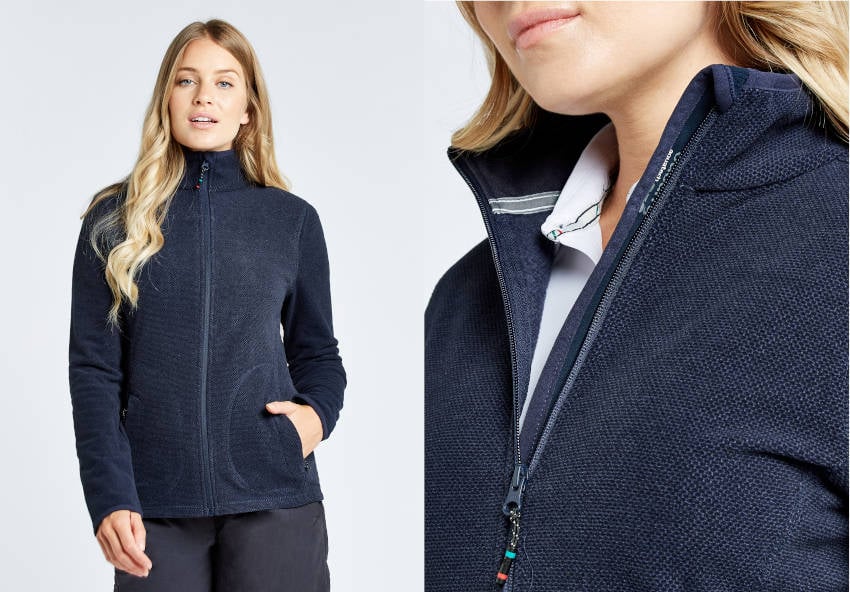
Keep out the chill on deck is easy with the Mustique and Sicily full-zip fleece jackets.
The Sicily fleece (above) is medium-weight, soft-textured and ideal for any sort of boating in a temperate climate. Not just warm and quick-drying but also wind resistant and fully breathable.
And with a full-length zip so you can slip it on easily and shrug it off in an instant — ideal for days of patchy sunshine and gusty winds, and when the breeze builds up or the temperature drops, the well-engineered zips won’t leave you fumbling with cold fingers.
In chillier weather, it’s the perfect mid-layer to wear under your all-weather foulies, providing excellent insulation without being too bulky.
Technical features include a stretchy hem and cuffs for a flexible fit, zipped hand-warmer pockets with a warm, brushed lining, a draught-excluding chin guard, and flat locked seams for comfort.
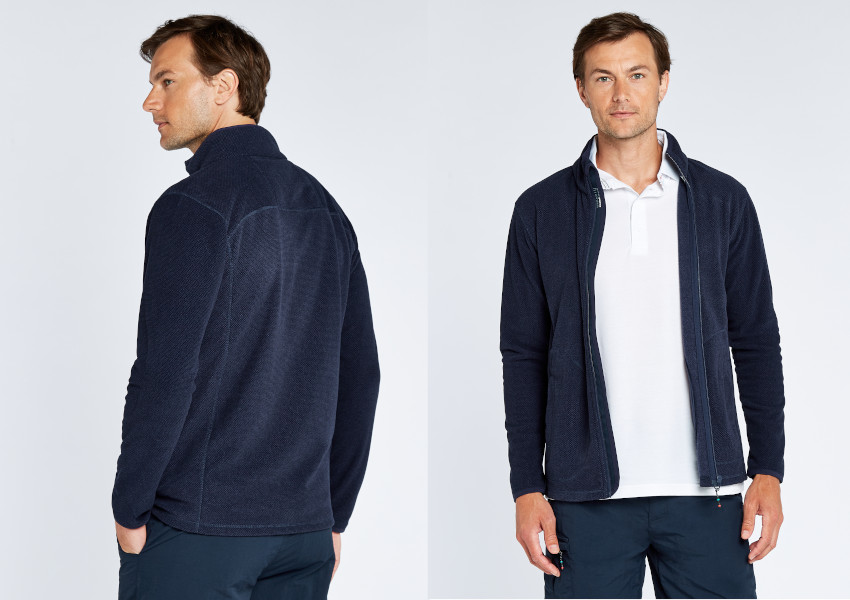
The Mustique fleece is for any sort of boating in a temperate climate and when you’ll need a warm, quick-drying fleece, ideally one with a full-length zip so you can slip it on in an instant when the sun disappears behind the clouds.
The mid-weight fleece retains heat effectively while remaining breathable, with a texture that feels cosy against the skin — ideal as a mid-layer garment providing excellent insulation beneath your all-weather foulies, or worn as an outer layer in more clement weather. It also comes with technical features comparable as the Sicily.
Like the crew jackets, the Mustique and Sicily are available in two colours and various sizes (Mustique S–3XL; Sicily 32–44). The Mustique is priced at €99 RRP, with the Sicily at €89 RRP.
Complete the look and browse footwear, polos, shorts and accessories from Dubarry’s new Aquatech collection in the virtual catalogue HERE.
Dubarry Introduces New Aquatech Footwear Collection
Dubarry’s new Aquatech Collection has been specifically designed for use across a wide variety of nautical environments.
Joining the existing Easkey and Skerries trainers for men and for women are the Antibes and Palma. Both are available in multiple colours and retail at €129 RRP.
They come with all the key performance features you would expect from Dubarry’s heritage dating back to 1937.
The trademark NonSlip-NonMarking rubber outsole delivers sure-footedness on all deck surfaces, thanks to a unique system of water dispersion channels that prevent aquaplaning.
And coupled with the lightweight EVA midsole, both shoes offer exceptional underfoot comfort.
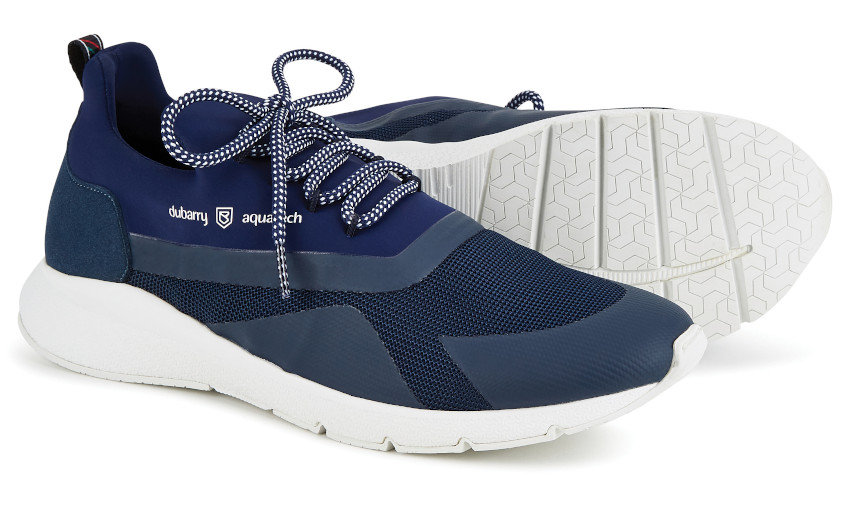
Antibes is an ultra-light, high-performance sneaker that’s engineered to boost your natural agility and is loaded with numerous technical features.
The hardwearing sole has excellent shock-absorbing performance and the removable footbed moulds to the contours of your instep, delivering the ultimate comfort.
The super-soft upper is made from quick-drying technical fabric with antimicrobial and anti-odour properties built in. And the partly concealed lacing is precisely adjustable to ensure a perfect fit.

Palma is Dubarry’s our super-light, sure-footed and sporty sneaker offering the ultimate comfort.
Extra-soft uppers and full lacing for a precise fit are combined with a uniquely designed footbed that moulds to match the shape of your foot, plus a high-performance shock absorbing EVA midsole.
Remarkable agility is assured on deck — or anywhere else — with signature NonSlip-NonMarking outsoles. The footbed is removable for easy washing and the uppers are made from quick-drying, breathable and anti-microbial technical fabrics.
Complementing these are the lightweight Fastnet boots (RRP €229) which have an athletic design with outstanding technical performance.
They are not just waterproof, with a breathable membrane; they're impressively shock-absorbent, too. The removable footbed provides extra cushioning and the D-Chassis system delivers additional support, protection and control for heels and toes while preserving your agility.
And the award-winning NonSlip-NonMarking rubber outsole has a unique water dispersion channel system to eliminate the risk of aquaplaning on wet decks.
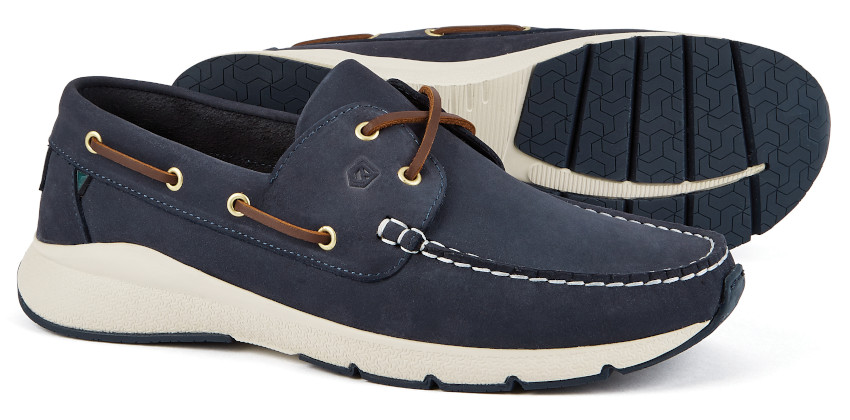
Meanwhile, the Dungarvan deck shoe (RRP €169) combines the classic good looks of authentic, traditionally handmade leather deck shoes with the shock absorption, support and comfort of lightweight technical trainers, plus the excellent grip of Dubarry’s award-winning NonSlip-NonMarking outsoles.
The uppers are crafted from high-quality nubuck and our unique DryFast-DrySoft leathers with a water-resistant finish and a hand sewn, waterproof chain butt seam on the toecap.
Explore the full Aquatech collection — including the Crosshaven, Ultima and Shamrock boots built for the ocean — in the virtual catalogue HERE.
Dubarry sailing boots have long had a connection with top offshore teams around the world so it was no surprise to many sailors when Vendee Globe winner Yannick Bestaven wore the same as he crossed the Les Sables d’Olonne line.
When Bestaven stood on the bow of Maître Coq IV to greet the world's press he was sporting a pair of Dubarry's high-performance Crosshaven gaiter sailing boots, handing the County Galway firm some international front-page news coverage into the bargain!
The 48-year-old French skipper of Maître Coq IV actually took the gun for third place at 03hrs 19mins 46 secs early last Thursday morning, because he carried a time compensation of 10 hours and 15 minutes, awarded by an international jury for his role in the search and rescue of fellow competitor Kevin Escoffier. It's a seamanship story that adds richly to Besthaven's well deserved win of the ninth edition of the race.
Bestaven took victory 2hrs 31mins 01secs ahead of Charlie Dalin and 6hrs 40mins 26secs of Louis Burton who both finished ahead of him and take second and third respectively.
 First across the line Charlie Dalin also wore Ireland's Dubarry Crosshaven boots Photo: Vendee Globe
First across the line Charlie Dalin also wore Ireland's Dubarry Crosshaven boots Photo: Vendee Globe
And as images of the winner were beamed around the world from Les Sables d’Olonne, Ireland's connection as a top marine clothing innovator was there for all to see, thanks to his uniquely designed Irish Dubarry footwear.
The Crosshaven boat by Dubarry high performance, thermally insulated, ExtraFit™gaiter sailing boot. Upper consists of a uniquely designed leather vamp and counter with minimal seams to reduce wear in critical areas. More on the boot here
Dubarry Winter Sales Starts Today!
The Dubarry Winter Sale starts today.
The Irish sailing footwear and clothing manufacturer is offering up to 40% off selected items until the 17th January.
Shop here.
Free ‘Kilrush’ Socks with Selected Dubarry Boots at CH Marine
Get a free pair of Dubarry Kilrush socks with €29 when you buy a pair of selected Dubarry boots from CH Marine.
No ordinary yarn went into the Dubarry Kilrush long PrimaLoft socks. They mixed insulating Primaloft with Merino wool, nylon and elastane which, combined, made a soft, warm, stretchy strong sock.
Not just that, they are designed to fit right and left feet individually, and have an elasticated section that grips for support.
Dubarry Kilrush socks come free with CH Marine’s choice selection of Dubuarry’s Fastnet, Shamrock and Ultima sailing boots while stocks last until Christmas Eve.
And don’t miss out on CH Marine’s flash Black Friday deals on Zhik gear and Musto items which must end this Monday 30 November.
Limerick Ketch Ilen’s Model Gets the Dubarry Boots On
Our story last week, about how Gary Mac Mahon of the restored trading ketch Ilen of Limerick has launched a unique ship’s model-making competition to express the Ilen spirit, has rung a bell in Ballinasloe in County Galway, at the headquarters of the international outdoor footwear and clothing company Dubarry of Ireland
The Ilen competition offers a prize of a €150 Amazon Gift Voucher for children (or children and their families) who can create a model which best captures the spirit of Ilen and her original crew with a simplified miniature of the ship based on a very re-purposed Tetra Pak carton, the other materials involved being hopefully available in any contemporary family home.
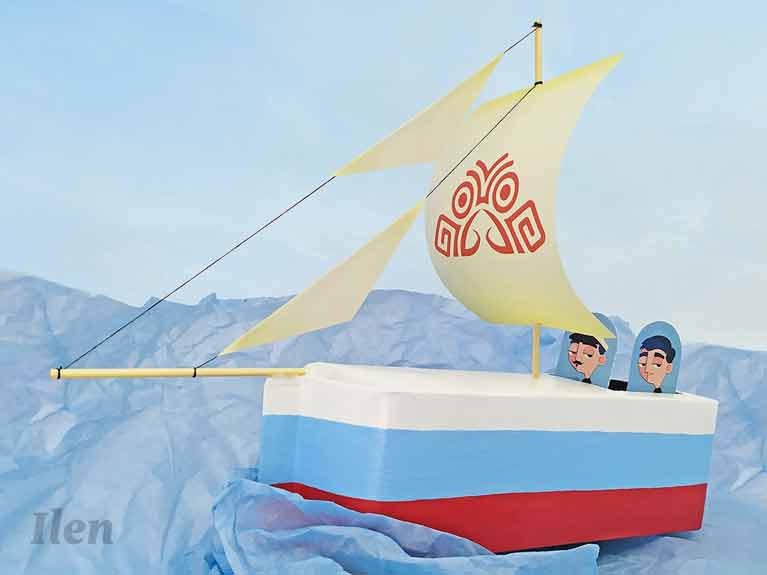 The essence of Ilen with her original skipper Conor O’Brien and his crew is expressed in this model based on a very re-purposed Tetra Pak carton
The essence of Ilen with her original skipper Conor O’Brien and his crew is expressed in this model based on a very re-purposed Tetra Pak carton
The idea is to provide the kind of imagination and ingenuity-testing challenge that will help us all get through the National Lockdown. And when the idea was revealed in Afloat.ie last week, Michael Walsh of Dubarry quickly responded: “What a great idea. I’d very much appreciate it if you would pass on to Gary Mac Mahon that Dubarry would very happily pitch in with a pair of Dubarry Boots or Deck Shoes for the winner”.
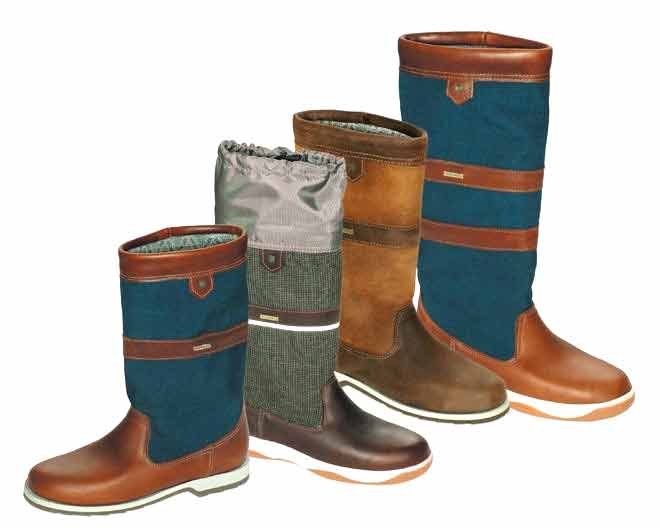 The Ilen Model competition has been greatly expanded with a choice of Dubarry Sailing Boots (above) and Dubarry Deck Shoes added to the prize
The Ilen Model competition has been greatly expanded with a choice of Dubarry Sailing Boots (above) and Dubarry Deck Shoes added to the prize
Now Dubarry of Ireland is Official Partners in the Ilen Project Model Competition, which makes the already good prize into a very worthwhile proposition. So folks young and old, once you’ve finished browsing the Dubarry range to find the Dubarry boot or deck-shoe of your choice, let’s get back to work on those models – the closing date is May 22nd.
Dubarry Supports Belgian Solo Sailor in Galway
Belgian solo sailor Caroline Adriens has departed southwards from Galway after spending nearly a year in the popular west coast port with her 30ft Albin Ballad.
She had arrived in Galway in September 2018 from Tromsø in Norway via Shetland, Orkney, Cape Wrath, the west coast of Scotland, Northern Ireland, northwest Ireland and the coast of Connacht before mooring up in Galway for the winter in the welcoming shelter of the dock.
Her boat, a classic Albin Ballad, is of a successful and seaworthy marque that was built in Sweden between 1971 and 1982 and has now been overhauled in Galway in advance of her dream to sail around the world.
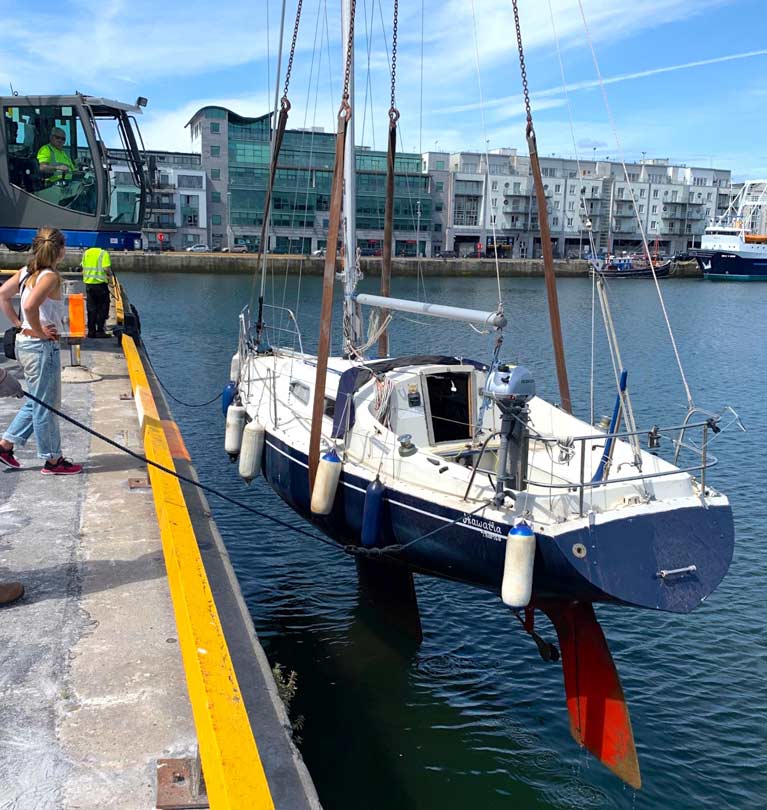 Hiawatha in the slings in Galway, Caroline Adriens on left
Hiawatha in the slings in Galway, Caroline Adriens on left
Caroline said of her plans that: “It’s an itch that I’ve wanted to scratch for quite some time, and I’m finally realising my dream when I depart from Galway.
It will be the first time that I have actually sailed on my own. I'm excited, but of course a little nervous, as the ocean is a big place and my boat is not so big".
On hearing of Caroline's impending trip, Michael Walsh of Dubarry wasted no time in supporting Caroline with a pair of Shamrock Sailing Boots to ensure she departed Galway with the best women's sailing footwear on the market.
Caroline plans to be in Portugal for the winter via the Scilly Isles in early September, and has reached Valentia Island in Kerry by way of Fenit on Tralee Bay in the first stages of her voyage southward.
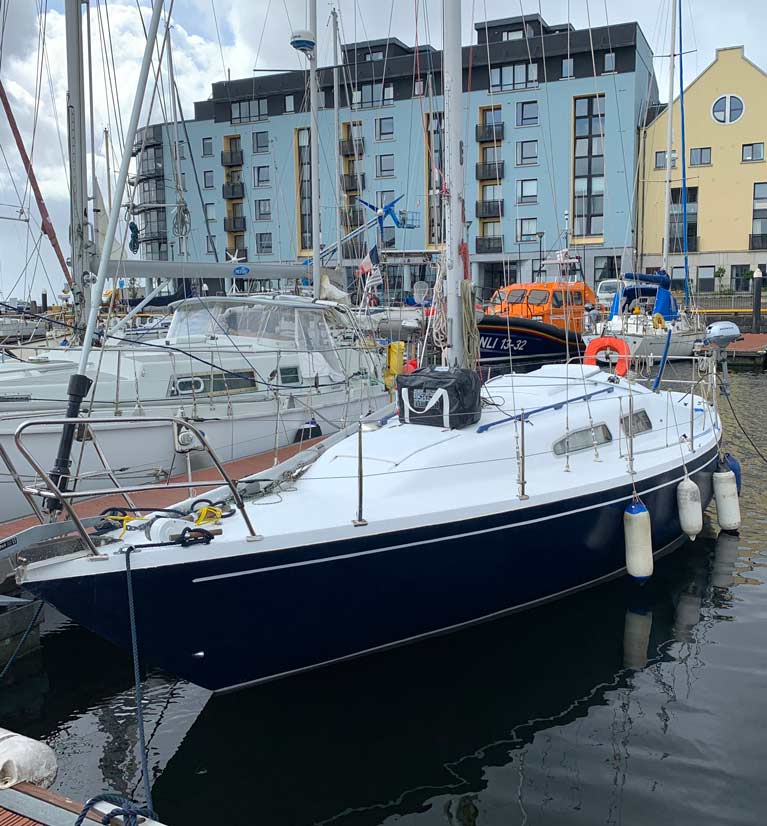 Belgian solo sailor Caroline Adriens’ Hiawatha is a well-proven Albin Ballad built in Sweden in the 1980s
Belgian solo sailor Caroline Adriens’ Hiawatha is a well-proven Albin Ballad built in Sweden in the 1980s




























